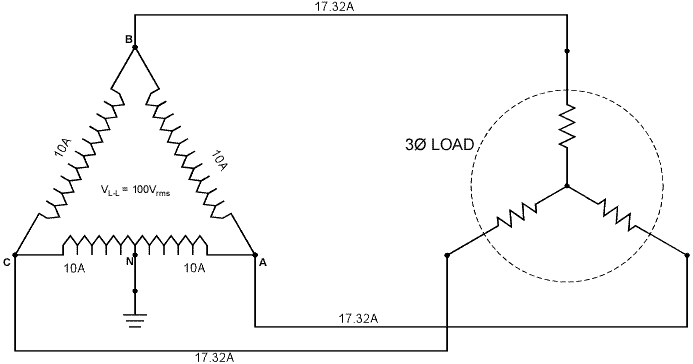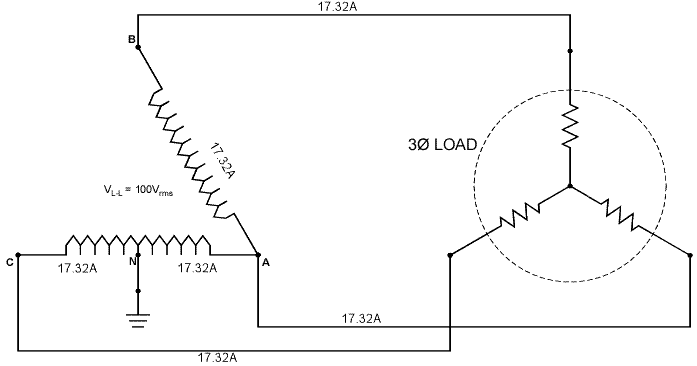Looking back at the OP and follow-up post, I believe he is referring to "transformer" in the general sense.
Getting back to the part about how to calculate an open-delta service, it is generally assumed all single phase loads will be connected A to C (the center-tapped winding). If it is known the POCO is going to supply power via an open delta "transformer", all that is necessary is to separate the calculated single phase loads from the calculated three phase loads and supply the POCO with these kVA values. They will determine the "transformer" size(s).
If one has to determine sizes, first let's explain the why the cores are oversized. In the following example we have a typical 3? load connected to a [closed] delta secondary operating at 100Vrms (just to make calc's easier).
So here our calculated load is: 17.32A ? 100V ? √3 = 3kVA.
And as seen by the "transformer": 10A ? 100V ? 3 = 3kVA
Now let's compare to the same load powered by an open-delta secondary.
Here our calculated load is the same: 17.32A ? 100V ? √3 = 3kVA.
But as seen by the "transformer": 17.32A ?100V ? 2 =
3.464kVA
As such, each winding must be sized for 1.732kVA. That gives us a ratio of 1.732 to 3, which is 57.7% of the load.
From there, the single phase load connected A to C can be arithmetically added to the "lighter" core, while the "kicker" can be as determined.
PS: I wish they would call the "lighter" core the "lighting" core, or "major" core, or something of the sort, so as not to confuse it with a core being
lighter rated.



